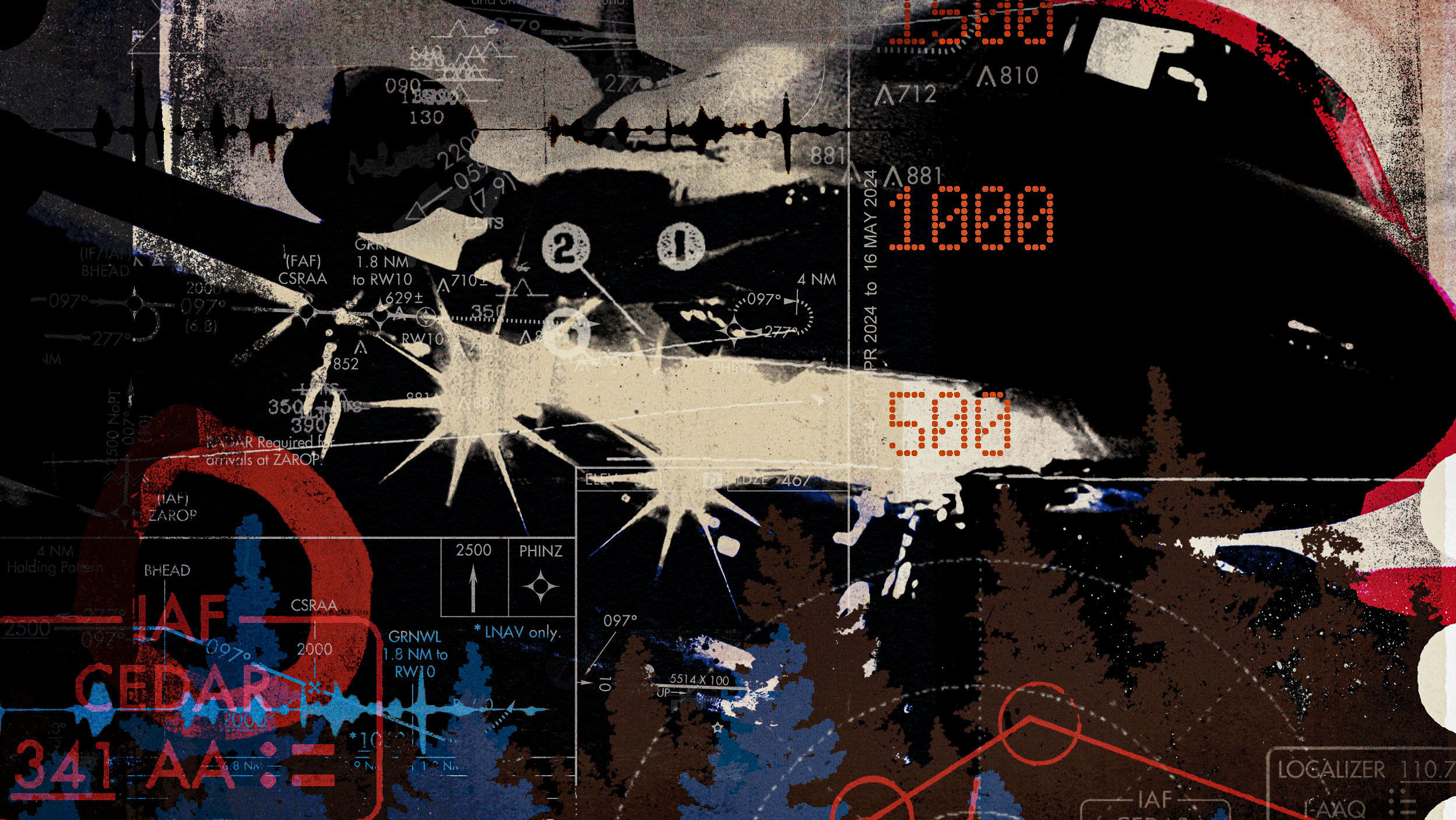Speak up
Crew resource (mis)management

The call-and-response technique of checklist completion and the division of labor between the pilot flying handling the controls and the pilot monitoring calling each phase’s procedures and making sure they’re actually followed should minimize the risk of any step being skipped or even performed out of sequence. Verbalizing the departure and approach briefings likewise aims to guarantee that no detail is overlooked. For this to work as designed, though, both pilots must understand their roles and fulfill them competently—and be ready to respond decisively to signs that the other is falling behind.
At 5:44 a.m. on October 5, 2021, a Falcon 20C flying the second leg of an on-demand Part 135 cargo flight crashed short of Runway 10 at the Thomson-McDuffie County Airport (HQU) in Thomson, Georgia. Both pilots were killed, and the airplane was destroyed. The captain was the pilot flying on the first leg, from El Paso to Lubbock, Texas, which proceeded uneventfully. Following a two-hour 20-minute wait to load additional cargo, the Falcon took off shortly before 2 a.m. EDT with the first officer at the controls.
Both pilots were highly experienced, and they’d flown together regularly, including night cargo flights. The 73-year-old captain was an airline transport pilot with nearly 12,000 hours of flight experience that included 1,665 in the Falcon 20. However, he’d required retraining and retesting to pass multiple competence/proficiency checks over the previous five years. The 63-year-old first officer held a commercial certificate and had flown nearly 11,000 hours, with 1,248 hours in make and model. His most recent competence/proficiency check, completed on December 30, 2020, was noted “SIC only” in the operator’s records “due to pilot performance and a lack of aeronautical decision making and airmanship necessary to become a PIC/captain.”
At 5:03, after being handed off to Atlanta Center, the crew requested notams for the ILS approach to Runway 10 at HQU. The controller found two. The first indicated “GP unusable” and the controller acknowledged that he did not know what “GP” (glidepath) meant. The second was for an unusable localizer but would not take effect until after their planned arrival time. At 5:25, one of the pilots responded to “Say approach requested” with “ILS Runway one-zero approach” and was told to stand by. A minute later they were cleared to its initial approach fix, the CEDAR NDB.
While the quality of the cockpit voice recording was poor, it picked up at least four instances between 5:18 and 5:21 of the captain giving the first officer heading or altitude corrections and telling him to “fly the airplane.” He took the controls at least once and asked, “You’ve flown in bad weather before?” (ATC was helping them navigate around thunderstorms at the time.) He also interrupted his briefing of the approach to give the pilot flying another heading correction. At 5:27, as the Falcon descended from FL240 to 11,000 feet, the captain yelled, “I’ll get that, you fly the damn airplane. I don’t want you to kill me.” Subsequent transmissions revealed confusion about how to identify CEDAR; the crew requested vectors to the final approach course, which the controller was unable to provide, having no depiction of the approach on his en route displays.
The captain gave at least four more heading corrections and three warnings about altitude before Atlanta Center transmitted, “Fifteen miles southwest of the CEDAR intersection. Cross CEDAR at or above three thousand, cleared ILS localizer into Thomson-McDuffie.” The controller confirmed that “the readback was good—it did go out on Guard, but I got it…please report established on the procedure.” The landing gear was extended at 5:37, and clicks suggestive of activating the pilot-controlled lighting were recorded three times in the next three minutes. At 5:39 the captain was recorded saying, “Will you fly the airplane, man? I’ve been doing everything else.”
Just before they captured the localizer at 5:41, the captain told the first officer to “follow the glideslope,” which was out of service. A minute later the captain reported having the runway in sight and cancelled IFR. The jet was just outside CEDAR, which is 4.5 nautical miles from the runway threshold, at about 165 knots airspeed and an altitude of 2,600 feet—400 below their assigned altitude of 3,000 but 600 above the inbound crossing altitude for the approach. ADS-B track data showed that it was also 500 feet left of the extended centerline, and their calculated airspeed was about 50 knots above their 113-knot reference speed. The crew extended landing flaps (40 degrees).
Two miles from the runway, the captain said, “Hey, watch your speed—we got to slow up a lot—and we’re high. We’re high and fast. You got to lose 20 knots here. Let’s use your air brakes again.” Engine noise decreased, apparently to flight idle. When he repeated, “You’re way high,” the first officer replied “No, I’m not,” to which the captain said, “Look...and we’re 15 knots fast, we got a short runway.” Less than 10 seconds later, as the jet descended with gear, full landing flaps, and air brakes all extended, he said, “Now we’re low.” The CVR captured noises interpreted as the trim wheel and an increase in engine power in the two seconds before the captain said, “You’ve got trees,” the stall warning activated, and the CVR recorded the sounds of impact.
The Falcon hit 150-foot trees about 0.7 nautical miles from the threshold. The main wreckage was found in three distinct sections; the landing gear, flaps, and air brakes were all fully extended, and debris ingestion showed that both engines were running at the moment of collision. The National Transportation Safety Bureau’s final report drew attention to the Falcon 20’s flight manual, which specified that air brakes were to be retracted on approach unless anti-icing systems were in use, in which case they should be retracted no less than 500 feet above the ground. Investigators found no evidence that the anti-ice systems had been activated, and Dassault subsequently confirmed that the company had no flight test data on the combination of idle power, extended gear, full flaps, and full air brake deployment.
The NTSB also stressed the captain’s failure to assert command at crucial points: by not directing the first officer to fly the procedure turn to give the airplane time to slow down and lose altitude, not taking the controls when his partner was clearly overloaded, and continuing a badly unstable approach rather than going around. Formally, they attributed the accident to “The flight crew’s continuation of an unstable dark night visual approach and the captain’s instruction to use air brakes during the approach contrary to airplane operating limitations, which resulted in a descent below the glide path and a collision with terrain. Contributing to the accident was the captain’s poor crew resource management and failure to take over pilot flying responsibilities after the first officer repeatedly demonstrated deficiencies in flying the airplane.”
The lack of any altitude call-outs during the approach on the CVR tape was emblematic of the slipshod technique that ultimately doomed the flight.
David Jack Kenny is a freelance aviation writer and former statistician for the AOPA Air Safety Institute.



